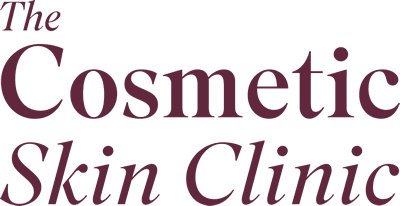Summary of Content
Click on the links below to jump to each section:
- What is BOTOX®?
- Is BOTOX ® a filler?
- Is BOTOX ® a steroid?
- How does BOTOX ® work?
- What are some pre-BOTOX® treatment tips that you should consider?
- How long does BOTOX ® take to work?
- How long does BOTOX last?
- How do you make BOTOX ® last longer?
- How often should you get BOTOX?
- Do you build a resistance to BOTOX ® over time?
- How does BOTOX ® help with excessive sweating (hyperhidrosis)?
- How much does BOTOX ® cost?
- Do BOTOX® injections cause weight gain?
- Does BOTOX® help acne?
- Does BOTOX® cause headaches?
- Does BOTOX® make you tired?
- What’s the difference between BOTOX® and a dermal filler?
- Can you have BOTOX and Profhilo at the same time?
- When was BOTOX® first FDA approved?
- Can BOTOX® help headaches and migraines?
- Does BOTOX® help under-eye bags?
- Does BOTOX® help TMJ syndrome?
- Can you have BOTOX while pregnant?
- Can you have BOTOX while breastfeeding?
- Can you get BOTOX ® after a cortisone shot?
- Can you get BOTOX ® while on steroids?
- Should BOTOX® be used around the mouth?
- Why would BOTOX® be used for excessive sweating?
- Will BOTOX® help smile lines?
- Is BOTOX® natural?
- Is BOTOX® good for crow’s feet?
- Does BOTOX® fill in wrinkles?
- Does BOTOX® help dark circles under eyes?
- Does BOTOX® raise your eyebrows?
- How soon after BOTOX® can I have a facial?
- Can BOTOX® lift hooded eyes?
- Can BOTOX® lift sagging cheeks?
- Can Botox be reversed?
- What are the different types of BOTOX® available?
What is BOTOX ®?
Botox or Botulinum Toxin Type A is an injectable muscle relaxant used to soften and reduce fine lines and wrinkles. Botulinum Toxin Type A is a cosmetic treatment that blocks signals from your nerves to your muscles to prevent them from contracting.
Botox has been FDA-approved to treat moderate to severe glabellar lines (frown lines) in 2002, and in 2013 for the treatment of crow’s feet. Botulinum Toxin is a minimally invasive treatment and its effects can last up to 6 months depending on the product used and area treated.
Is BOTOX ® a filler?
No. Fillers are made from substances such as hyaluronic acid, which are injected under the skin to fill out lines and wrinkles, as well as to refresh and volumise the skin. Botulinum Toxin, on the other hand, is a natural muscle relaxant that works by blocking nerve signals to muscles, restricting movement and preventing the muscles from creasing up.
Is BOTOX ® a steroid?
No. BOTOX ® is a purified protein, derived from the botulinum toxin and acts by blocking nerve signals to the muscles in the injection site. Steroids are synthetic version of human hormones. corticosteroids are often used to reduce the effect of the body’s immune system to treat certain conditions, while anabolic steroids are used illicitly to increase muscle mass.
How does BOTOX ® work?
Botox injections work by blocking signals from nerves that cause muscles to contract. Usually, when the muscles contract – this results in the wrinkle being visible. When the muscle is unable to contract, the wrinkle will soften and become less visible. The reduction in muscle movement can also help to prevent new wrinkles from forming.
What are some pre-BOTOX ® treatment tips that you should consider?
- Time it right. We recommend scheduling your Botox treatment at least 2 weeks before any events that you might have to attend.
- Choose the right Botox practitioner: enquire about their qualifications and experience. See our comprehensive article on “How to tell if your Botox Practitioner is properly trained” to learn more.
- Ask all the important questions: Botox cost, areas of your face that you can treat with Botox, how many units will be needed based on the area treated.
- Avoid ibuprofen and other blood thinning medication to prevent bruising.
- Drink plenty of fluids and have your normal meals. This will help to avoid dizziness during and after your Botox injections procedure.
How long does BOTOX ® take to work?
It usually takes a few days to see the results, however, it will take around 14 days to achieve the full effect. 2-4 weeks post-procedure, your practitioner will review the results for the best outcome and longevity.
How long does Botox last?
Botox usually lasts for roughly 3 or 4 months which is why we recommend getting a repeat treatment after this point which our practitioners will advise you on.
How do you make BOTOX ® last longer?
Some people who have received Botulinum Toxin over a long period of time subconsciously retrain their muscles to be less active. The effect of this is that the muscles no longer make the wrinkle-causing movements as frequently as before. Another result is that these muscles also become weaker, which also effectively extends the results.
How often should you get BOTOX?
We recommend getting Botox approximately every 3-4 months over a 12-month period to maintain your fresh and natural looking results.
Do you build a resistance to BOTOX ® over time?
It would be extremely rare to develop a resistance to this injectable treatment. A far more common reason for people believing they have built up a tolerance to Botulinum Toxin is because it has been administered incorrectly. This may be due to the fact that:
- It was administered by an unqualified practitioner
- Your practitioner does not have the relevant experience.
The quality of the BOTOX ® itself may have an effect. Old, over-diluted or poorly stored injectables will impact on results.
How does BOTOX ® help with excessive sweating (hyperhidrosis)?
Just as BOTOX ® works to block nerve signals to the facial muscles, reducing lines and wrinkles and resulting in smoother skin, the product can also be used block nerve signals to the overactive muscle by the sweat glands. This will reduce sweating in the area of treatment for up to 6 months.
How much does BOTOX ® cost?
The difference in prices between clinics often relate to a number of factors, such as:
- The level of experience and training held by the practitioner
- The quality of the premises and equipment used
- The degree of consultation and aftercare on offer.
Do BOTOX® injections cause weight gain?
Botulinum Toxin is an FDA-approved medicine that relaxes muscles in the face and body; thereby preventing skin from creasing. It is also effective for treating excessive sweating. This injectable treatment does not affect any system in the body that is responsible for building weight; hence, weight gain is not associated with BOTOX® use.
Does BOTOX® help acne?
Botulinum Toxin is typically used for the improvement of lines and wrinkles caused by excessive movement of underlying muscles. There are more effective options available which will improve the condition, tone and texture of your skin, such as therapies that stimulate collagen, gentle laser treatments or use of products designed to control acne. These products, known as cosmeceuticals, contain combinations of active ingredients to help minimize the acne scarring and to control the acne breakouts.
Does BOTOX® cause headaches?
True BOTOX® allergies are exceedingly rare. Temporary headache is the most commonly reported symptom, though the numbers of patients who report headaches is very small, compared with the amount of treatments performed. Any headache can be treated with simple painkillers such as paracetamol.
Does BOTOX® make you tired?
The effects of BOTOX® are localised and work by blocking nerves signals to specific muscles. This injectable treatment should not make you look or feel tired. To the contrary, administered correctly for the individual patient can refresh tired looking eyes.
What’s the difference between BOTOX® and a dermal filler?
Both treatments involve injections, but Botulinum Toxin restricts the muscle movement that results in wrinkles while dermal fillers simply plump out and smooth wrinkles. Sometimes, these treatments are more effective when combined. Find our more about the difference between Botulinum Toxin and dermal fillers from our dedicated blog.
Can you have BOTOX and Profhilo at the same time?
Yes, you can definitely get Botox and Profhilo done in the same session. In fact, at The Cosmetic Skin Clinic we frequently do sessions of combining injectables such as Profhilo and Botox and create great results.
When was BOTOX® first FDA approved?
The botulinum toxin was first cleared by the FDA in 1989 for the treatment of a medical eye condition. However, it was in 2002 that the formula, now renamed BOTOX®, was given FDA clearance as a safe and reliable cosmetic treatment. Since that time, this popular wonder drug has received approval for the treatment of many conditions, including chronic migraine, bladder problems and muscle stiffness, as well as several aesthetic procedures.
Can BOTOX® help headaches and migraines?
Research suggests that Botulinum Toxin can be effective in treating and preventing chronic headaches and migraines. In fact, the National Institute for Health and Clinical Excellence (NICE) recommended in 2012 that BOTOX could be used to prevent migraines after identifying two large randomised controlled trials that suggested the injections reduced the frequency of headache days for chronic sufferers.
The NICE recommendations suggest Botulinum Toxin may be prescribed on the NHS if the following criteria are met:
- The person has chronic migraines – defined as headaches on at least 15 days a month, of which at least 8 are with migraine
- The person has not responded to at least 3 drug-based treatments intended to prevent migraines
- The person is being appropriately managed for medication overuse – that is, the headaches are not caused by withdrawal from the regular use of painkillers.
If you believe you meet these criteria, it’s important to talk to your GP about whether you could receive BOTOX® treatment on the NHS. And, even if you don’t meet the criteria but suffer from frequent headaches and all other medical reasons have been ruled out, you may benefit from this treatment. Contact The Cosmetic Skin Clinic for further information and to arrange a consultation with one of our qualified practitioners.
Does BOTOX® help under-eye bags?
Botulinum Toxin cannot help to reduce the appearance of under-eye bags and dark circles; however, it might be that fillers are a better option for this common complaint. This is because it is usually a deep tear trough with volume loss that gives the appearance of bags under the eyes. A hyaluronic acid-based filler, such as Juvederm or Restylane, can be really effective to add volume and soften the appearance of under-eye bags.
Alternatively, at The Cosmetic Skin Clinic we also offer Thermage® Eyes – a focused, radiofrequency treatment designed to reduce eye wrinkles plus firm up the skin. Tixel is recommended treatment for this area. We recommend booking a consultation to discuss with one of our qualified practitioners which treatment is most suitable for you.
Does BOTOX® help TMJ syndrome?
Temporomandibular joint (TMJ) syndrome, a condition characterised by pain in the jaw joint, can be relieved with BOTOX®. Causes of the condition include injury to the teeth or jaw, teeth grinding, poor posture, stress and arthritis. Botulinum Toxin is injected into key areas of the masseter muscle that contribute to TMJ syndrome to relax the muscle and relieve the pain. However, it is a temporary solution and will need to be repeated every three to four months initially. It should also be noted that BOTOX® in this area will not smooth out wrinkles.
Can you have BOTOX while pregnant?
The advice is not to have BOTOX® injections if you’re pregnant, since the potential effects on the baby are not known.
Can you get BOTOX® while breastfeeding?
In line with the advice for pregnancy, the NHS states you should not have BOTOX® if you are breastfeeding, because the potential effects on your baby are unknown.
Can you get BOTOX® after a cortisone shot?
Yes, it is safe to have Botulinum Toxin treatment after receiving a cortisone injection. No negative side effects should occur as a result of this however it is recommended that you inform your doctor or nurse ahead of treatment so that they are aware.
Can you get BOTOX® while on steroids?
Yes, there are currently no contraindications to having steroids and botox. We do recommend that you inform your doctor or nurse prior to having the treatment so that they are aware.
Should BOTOX® be used around the mouth?
Yes, this anti-wrinkle treatment can be used safely and effectively around the mouth – so long as it is administered by a highly skilled practitioner. Because Botulinum Toxin relaxes muscles, great care must be taken when treating the mouth area so as not to impair its movement or appearance. For this reason it’s imperative that an experienced and fully qualified practitioner will carry out this procedure. Our skilled team is able to use BOTOX® injections to fix an uneven smile and lift mouth corners using precise placement. You can always contact us or book a consultation.
Why would BOTOX® be used for excessive sweating?
Since Botulinum Toxin is perhaps best known for its cosmetic uses to remove lines and wrinkles from the face, not everybody realises that it can also be very effective in reducing excessive sweating – known as hyperhidrosis – as it blocks the signals from the brain to the sweat glands. In the UK BOTOX® is licensed for treating axillary (underarm) hyperhidrosis and is generally a very effective treatment; however, as always it’s crucial to visit a trusted practitioner who is experienced in administering this injectable treatment for this purpose. At The Cosmetic Skin Clinic we offer BOTOX® treatment for hyperhidrosis – please contact the team for further information.
Will BOTOX® help smile lines?
Firstly, it depends what we mean when we say ‘smile lines’: some people mean crow’s feet around the eyes, which form when we smile; others mean the creases that form from the outside of the nose to the corners of the mouth (nasolabial folds). To reduce smile lines around the eyes (crow’s feet), Botulinum Toxin is a very effective treatment, whereas dermal fillers could be far more effective in lessening the appearance of nasolabial folds. The Cosmetic Skin Clinic offers both treatments, so contact the team for further information.
Is BOTOX® natural?
Yes, botulinum toxin (commonly referred to by the brand name BOTOX®) is a naturally occurring product. It is produced by clostridium botulinum bacteria.
Is BOTOX® good for crow’s feet?
Yes, Botulinum Toxin is a highly effective treatment for reducing the appearance of crow’s feet around the eyes, as you can see from our before and after photos. It is one of the most commonly treated areas with anti-wrinkle injections thanks to the good results patients see.
Does BOTOX® fill in wrinkles?
Anti-ageing injectables are extremely effective for reducing the appearance of wrinkles but arguably it does not ‘fill in’ wrinkles; instead, it relaxes the muscle under the skin that causes the wrinkle. It is dermal fillers, as the name suggests, that fill the line or crease to make it appear plumper and smoother. For deep-set frown lines and wrinkles, the two treatments can be extremely effective when used in combination – contact The Cosmetic Skin Clinic for more information.
Does BOTOX® help dark circles under eyes?
If your main concern is dark and hollow under-eye circles, it’s likely that anti-wrinkle injections treatment isn’t the most suitable solution. While Botulinum Toxin is great for reducing the appearance of fine lines around the sides of the eyes, a filler is more effective for tackling dark circles by replacing volume in the tear trough. Of course, an individual consultation is needed before you proceed with any procedure so that the practitioner can assess and prescribe the best treatment for your particular concern.
Does BOTOX® raise your eyebrows?
If a lift of the eyebrows is an effect that you desire, this should be discussed with the practitioner, as they will know the exact sites to which the anti-wrinkle treatment should be injected in order to create this lift, without causing a surprised or startled look.
How soon after BOTOX® can I have a facial?
It’s advisable to wait a minimum of 5 days after having BOTOX® to have a facial. This is to allow the skin time to rest and heal.
Can BOTOX® lift hooded eyes?
Botulinum Toxin can certainly achieve a nice lift for eyes with mild hooding, if administered by a highly skilled and experienced practitioner. It can be injected in a specific way to exert a lifting effect on the eyebrow and eyelid. However, if the hooding is more severe, and especially if it is affecting your vision, it might be that you would benefit from having excess skin removed. Our practitioners will be able to advise you on the best course of action for you.
Can BOTOX® lift sagging cheeks?
Although Botulinum Toxin can relax the masseter muscles, which can have a softening effect on the jawline, it might be that another treatment is better for lessening the appearance of sagging cheeks or jowls. For example, at The Cosmetic Skin Clinic we offer Ultherapy® – the leading ultrasound non-surgical lifting procedure – which can really help with skin laxity and jowling. New technologies can be combined with strategically placed dermal filler to lift heavy jowls. We are also the no. 1 clinic in the UK for Thermage® – another non-invasive treatment that uses radiofrequency technology to tighten and re-contour the skin with long-lasting results.
Can Botox be reversed?
Botox cannot be reversed per say. However, it should be noted that Botox wears off after 3 or 4 months.
What are the different types of BOTOX® available?
Botox® by Allergan – Botox® or Botulinum Toxin Type A is FDA-aproved and it is mainly used for moderate to severe fine lines and wrinkles. It can treat multiple skin conditions including moderate to severe crow’s feet, forehead lines, frown lines and other facial wrinkles. At the Cosmetic Skin Clinic we offer Botox® by Allergan, the world’s most researched Botox® injections. The effect of the Allergan Botox® injections can last up to 6 months.
Azzalure® & Dysport® by Galderma – Like Botox®, Azzalure® and Dysport® are Botulinum Toxin Type A, a naturally occurring protein. Azzalure® has been adapted from Dysport® and it is a local muscle relaxant treatment that can specifically treat glabellar lines, crow’s feet and forehead lines. Azzalure® can be used on fine to moderate facial wrinkles. This type of Botulinum Toxin Type A is marketed by Galderma. The effect of the Azzalure® Dysport® muscle relaxant injections can last up to 5 months.
Bocouture® / Xeomin® by Merz is a type of Botulinum Toxin A anti-wrinkle injections that can treat multiple skin-related conditions like horizontal forehead lines, frown lines, upper facial lines, and lateral periorbital lines and wrinkles . This type of Botulinum Toxin Type A injections are marketed by Merz and can treat fine to moderate facial wrinkles. The effect of the Bocouture®/ Xeomin® muscle relaxant injections can last up to 4 months. Gwyneth Paltrow is the global spokesperson for Xeomin® since 2020. The much-loved actress is a longtime user of the Bocouture®/ Xeomin® treatment.
Some of the medical conditions that can be treated with Botulinum Toxin Type A treatments include:
- Hyperhidrosis or excessive sweating.
- Lazy eye to balance the muscles that help position the eye.
- Eye twitching – Botox® relieves around the eyes muscles contractures.
- Migraines – Botox® can help reduce headaches frequency.
- Bladder dysfunction – Botox® injections can help treat an overactive bladder and reduce urinary incontinence.
Where do you go in London for the best BOTOX®?
To learn more about our anti wrinkle injections treatments or to book a consultation, contact our Botox Clinics in London and Buckinghamshire or give us a call on 0330 828 4666.
Other Interesting BOTOX® topics:
- Everything you need to know about Lip Flip with Botox
- Baby Botox vs Botox
- How to get rid of forehead lines
- How to treat crow’s feet?
How to find us?
The Cosmetic Skin Clinic in London is conveniently near Oxford Circus, Bond Street and Baker Street tube stations. You can also reach us by train with a quick ride from Paddington or Kings Cross St Pancras Train Stations.
The Cosmetic Skin Clinic in Buckinghamshire is located in Stoke Poges and it is near Gerrards Cross (Chiltern Railway) and Slough’s (First Great Western) station. If you’re travelling with your personal car, please know that the M25, M4, M40 and A40 roads, makes it really easy to reach from Beaconsfield, Marlow, Windsor, Wembley, Richmond, Kingston upon Thames and from the Surrey area.
For more details about our clinic’s locations and the best way to reach us based on your means of transportation, please take a look at our dedicated clinic location pages.




















